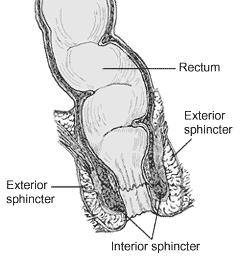Defecation
 From Wikidoc - Reading time: 3 min
From Wikidoc - Reading time: 3 min
Overview[edit | edit source]
|
WikiDoc Resources for Defecation |
|
Articles |
|---|
|
Most recent articles on Defecation |
|
Media |
|
Evidence Based Medicine |
|
Clinical Trials |
|
Ongoing Trials on Defecation at Clinical Trials.gov Clinical Trials on Defecation at Google
|
|
Guidelines / Policies / Govt |
|
US National Guidelines Clearinghouse on Defecation
|
|
Books |
|
News |
|
Commentary |
|
Definitions |
|
Patient Resources / Community |
|
Patient resources on Defecation Discussion groups on Defecation Patient Handouts on Defecation Directions to Hospitals Treating Defecation Risk calculators and risk factors for Defecation
|
|
Healthcare Provider Resources |
|
Causes & Risk Factors for Defecation |
|
Continuing Medical Education (CME) |
|
International |
|
|
|
Business |
|
Experimental / Informatics |

Defecation is the act or process by which organisms eliminate solid or semisolid waste material (feces) from the digestive tract via the anus. Humans expel feces with a frequency varying from a few times daily to a few times weekly; sloths can go a week without expelling. Waves of muscular contraction known as peristalsis in the walls of the colon move fecal matter through the digestive tract towards the rectum. Undigested food may also be expelled this way; this process is called egestion.
The rectum ampulla (anatomically also: ampulla recti) acts as a temporary storage facility for the unneeded material. As the rectal walls expand due to the material filling it, stretch receptors from the nervous system located in the rectal walls stimulate the desire to defecate. If the urge is not acted upon, the material in the rectum is often returned to the colon where more water is absorbed. If defecation is delayed for a prolonged period the fecal matter may harden, resulting in constipation.
When the rectum is full, an increase in intrarectal pressure forces the walls of the anal canal apart allowing the fecal matter to enter the canal. The rectum shortens as material is forced into the anal canal and peristaltic waves push the feces out of the rectum. The internal and external anal sphincters allow the feces to be passed by muscles pulling the anus up over the exiting feces.
During defecation the chest muscles, diaphragm, abdominal wall muscles, and pelvic diaphragm all exert pressure on the digestive tract and ventilation temporarily ceases as the lungs push the chest diaphragm down in order to exert pressure. Blood pressure rises throughout the body and the amount of blood pumped by the heart decreases. During this time, the body is effectively undergoing similar stresses to that of a valsalva maneuver. Death has been known to occur in cases where defecation causes the blood pressure to rise enough to cause the rupture of an aneurysm or to dislodge blood clots (see thrombosis).
Humans must consciously relax the external sphincter muscles to expel waste. The anal and urethal sphincter muscles are closely linked, and experiments by Dr. Harrison Weed at the Ohio State University Medical Center have shown that they can only be contracted together, not individually, and that they both show relaxation during urination. This explains why defecation is frequently accompanied with urination.
Defecation may be involuntary or under voluntary control. Young children learn voluntary control through the process of toilet training. Once trained, loss of control causing fecal incontinence may be caused by physical injury (such as damage to the anal sphincter that may result from an episiotomy), intense fright, inflammatory bowel disease, impaired water absorption in the colon (see diarrhea), and psychological or neurological factors.
The positions and modalities of defecation are culture-dependent. In some regions of the world, such as South Asia, East Asia and rural parts of the Middle East, it is customary to squat (typically using squat toilets), while in most of the Western World sit-down toilets are used.
The anus and buttocks may be cleansed with toilet paper or similar paper products. In some cultures water is also used (e.g. as with a bidet). In Japan, some toilets known as washlets are designed to wash and dry the anus of the user after defecation.
References[edit | edit source]
- Deeb, Benjamin (2004). "Healthy to the Core: How to Measure Effective Defecation." Greenwood Press.
bg:Дефекация cs:Vyprazdňování stolice de:Stuhlgang id:Buang air besar lt:Tuštinimasis nl:Defecatie no:Defekasjon sk:Defekácia ta:மலம் கழித்தல் Template:Jb1 Template:WH Template:WikiDoc Sources
 KSF
KSF